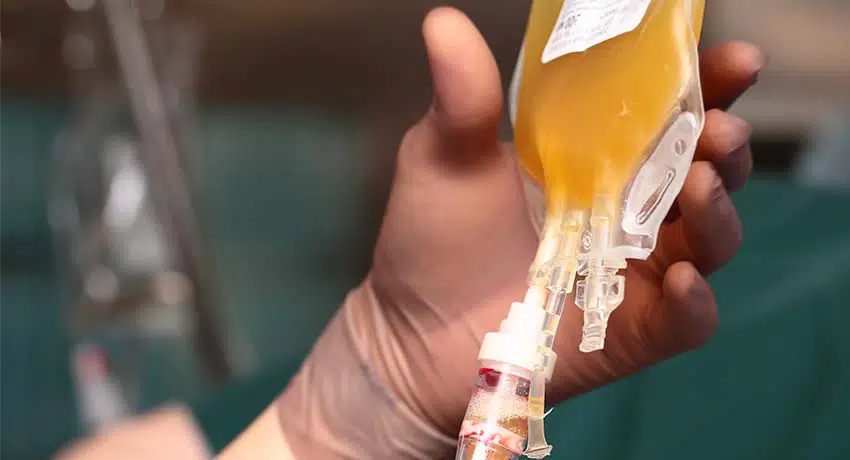What is plasma? Plasma is essentially the liquid in the blood that allows people to recover from illnesses, among other things. It contains components like albumin, immunoglobulins, fibrinogen, which help perform important functions such as transporting hormones and defending from infections. It’s no wonder that this is considered a coveted magic liquid, especially considering the number of drugs you can make with it. Consequently, this is the force behind the massive industry of plasma pharmaceuticals which went from a $4 billion annual market to more than $11 billion, since 2008. We can see why this is profitable for companies in this industry, but how do these companies get the plasma they are donating in the first place? And how is it so that nearly 70% of all plasma in the market is from the United States alone?
One of the biggest factors for this is the purposeful marketing towards poverty areas, where donors are easily found due to desperation for cash. Most plasma donors are, more often than not, extremely pressed for cash. They live in low-income areas where it is very difficult to get a job paying even minimum wage. In that type of environment, they see advertisements of plasma donations, which act like a godsend to them. I mean think about it, if you were in such a desperate situation and in urgent need of cash, whether to pay rent or buy food, who wouldn’t “donate” some blood plasma in return for some cash?
The U.S. had been especially hard hit by the Great Recession of 2008, and this is when nearly 100 new plasma centers have opened up, with total donations going from about 12.5 million in 2006 to about more than 23 million in 2011, within a span of just five years. Some organizations that collect donations include Biotest, Yale Plasma, and Octapharma.
Now imagine entering a stale white room filled with about 40 couches. Every single couch had a blood pressure cuff and centrifuge, and all of them were all stuffed with people with their hands out, waiting for their plasma to be taken out of them. Taken, by white-coated attendants, workers who are not even required to have medical or nursing degrees. You then see the faces of these donors light up upon receiving a debit card, containing a mere $30-$50 in return for the precious healing liquid they have just lost. This is the room Darryl Lorenzo, author of the article “The Twisted Business of Donating Plasma,” entered for his first time donating plasma.
What these donors are doing is a term called plassing, where donors get paid $50 for their first five donations, then $60 per week for willingly donating twice a week. US centers say that donating plasma is safe and the side effects are limited to mild faintness, bruising, and fatigue. However, more than 50% of donors have reported feeling very fatigued (nearly to the level of passing out), frequent bizarre tingling sensations, pains, rubbery legs, as well as severe dehydration. This is especially true in the case of those who “donate” twice a week.
But one particularly discerning fact, though, is that of all the countries that participate in plasma donations, the United States is the only one that allows donations twice a week. For example, in Britain, donations can only be given every two weeks. In Germany, only up to a max of 60 times per year can someone donate plasma. So why is it that the U.S. has such lenient takes on plasma donations? Not to mention just the frequency one can donate plasma, but also the regulation involved. It is known that just to pass the questions asked to be able to donate blood, like sexual activity and presence of tattoos, as well as weight requirements. Many poverty-stricken donors even wear ankle weights to pass the weight minimum of 110 pounds. Some even lie about their medical/tattoo/sexual histories, willingly putting themselves at life risk for the sake of some cash. Back in 2009, some people were so willing to donate repeatedly within the same day that they would shave off the finger nail containing yellow dye (applied for tracking purposes), just so they could donate once again. Some people have described donating plasma as nearly as addicting as drugs, as once you realize the option is there, you lose hope of wanting to improve yourself, and you fall back on this “option”. You start to think, “I can always donate more plasma if needed, why work hard to get more money anyway.”
It is a vicious cycle, and I truly feel that the U.S. needs to have improved regulations on this industry. I understand how important it is for producing drugs that can help others. But is it worth the life of the poor, donating their plasma at scary and dangerous amounts, only for the rich (those who can afford these expensive drugs) to buy them and save their own lives? Isn’t this simply just a transaction of life for life at some point?

